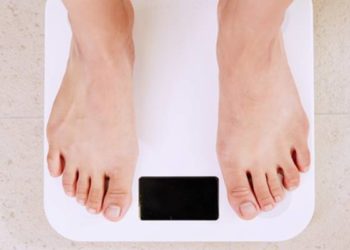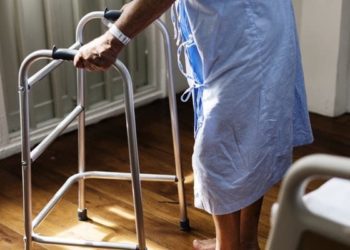After-school program increases physical activity in overweight children
[tabs tab1=”2MM Rundown” tab2= “2MM Full Report”]
[tab]
Image: PD/CDC
1. Among overweight children, those attending schools with an after-school, opt-in soccer program were more physically active than those attending schools without a program.
2. Among all children, the soccer program produced no changes in physical activity, fitness, or weight status.
This study showed that offering a year-long after-school, opt-in soccer program to overweight minority students increased their levels of physical activity. While the program did not benefit participants overall, it may be an effective targeted intervention that motivates overweight children (≥85th percentile) to exercise. Further, Saturday sessions led by program staff were more impactful, yet more expensive, than the trained school employee-led weekday sessions, suggesting that investment in program staff facilitation could lead to more dramatic outcomes.
One major study limitation was a higher incidence of overweight children in the control group (58% as compared to 40% in the intervention group). Additional, randomization by school instead of by ethnicity, weight and some measure of income, wealth or socioeconomic level makes these study results less reliable, particularly in a small sample size of 156 total students. Strengths include the practical setting of the study and the inclusion of school staff-led sessions and program staff-led sessions. Further evaluation of after-school programs should include randomization within schools, a larger sample size and long-term follow-up.
Click to read the study in JAMA Pediatrics
[/tab]
[tab]
Image: PD/CDC
1. Among overweight children, those attending schools with an after-school, opt-in soccer program were more physically active than those attending schools without the program.
2. Among all children, the soccer program produced no change in physical activity, fitness, or weight status.
This [cluster randomized] trial compared physical activity, cardiovascular fitness, and weight status among 156 students one year after their schools were randomized to receive an America SCORES after-school soccer program (intervention group, n=82 students, n=3 schools) or were allocated to not receive the intervention (control group, n=74, n=3 schools). All participants were fourth- and fifth-graders in the same urban San Francisco school district in 2009-2010. Nearly all were minorities (99.4% nonwhite) and overweight was defined as BMI ≥ 85th percentile. Intervention included school employee-led ran 2-hour weekday soccer sessions and program staff ran hour-long Saturday soccer sessions. Physical activity was measured by activity monitors worn by students for a total of three non-consecutive weeklong periods (one each in fall, winter, and spring).
Compared to control group participants, fewer intervention group participants were overweight at baseline (40% and 58%, respectively). Among overweight children, intervention group participants increased their physical activity more than control group participants during weekdays (mean difference: 3.8 ± 1.2 minutes and 0.4 ± 1.2 minutes, respectively) and Saturdays (mean difference: 14.6 ± 6.8 and -3.4 ± 6.6 minutes, respectively). Among children of all weights, there were no between-group differences in changes in physical activity, weight status, or fitness.
In sum: This study showed that offering an after-school, opt-in soccer program to overweight minority students increased their levels of physical activity, though it did not impact weight status or fitness. While the program did not benefit participants of all weights on any measure, it could be an effective targeted intervention that motivates overweight children to exercise. Further, the program staff-led Saturday sessions were far more impactful, albeit more expensive, than the trained school employee-led weekday sessions, suggesting that investment in program staff facilitation could lead to more dramatic outcomes.
One major study limitation was the variance in weight status at baseline between the two groups, which may have exaggerated benefit to overweight children. Another practical limitation was randomizing between schools instead of within schools, which could have biased results either way. Strengths include the practical setting of the study and the contrast between school staff-led sessions and program staff-led sessions. Further evaluation of after-school programs should investigate changes in participants’ attitudes towards physical activity, as well as clinical and cost-effectiveness of programs when delivered by school staff versus program staff.
Click to read the study in JAMA Pediatrics
By Caroline Huang and Leah Hawkins
More from this author:School-based therapy reduces asthma symptoms, Ethical argument for opt-out approach to DNR status in terminally ill children, Positive response to alcohol ads in young adolescence associated with alcohol-related problems later
© 2013 2minutemedicine.com. All rights reserved. No works may be reproduced without written consent from 2minutemedicine.com. Disclaimer: We present factual information directly from peer reviewed medical journals. No post should be construed as medical advice and is not intended as such by the authors or by 2minutemedicine.com. PLEASE SEE A HEALTHCARE PROVIDER IN YOUR AREA IF YOU SEEK MEDICAL ADVICE OF ANY SORT. Content is produced in accordance with fair use copyrights solely and strictly for the purpose of teaching, news and criticism. No benefit, monetary or otherwise, is realized by any participants or the owner of this domain.
[/tab]
[/tabs]


![Active smoking cessation intervention may provide tangible results [Project CLIQ]](https://www.2minutemedicine.com/wp-content/uploads/2014/12/smoking-e1418644951268-350x250.jpg)




![[Policy Statement] New guidelines for pediatric acute otitis media released](https://www.2minutemedicine.com/wp-content/uploads/2013/03/12449_lores1-75x75.jpg)